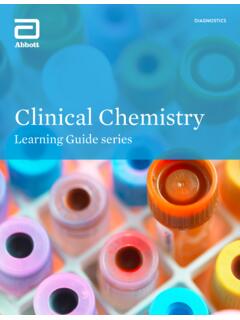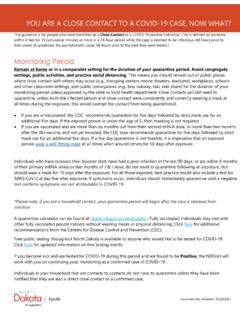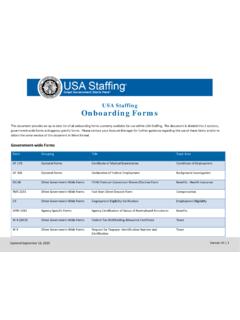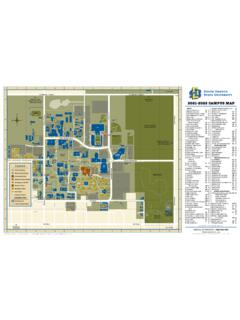Transcription of Six Sigma-based quality control
1 1 SIX Sigma-based quality CONTROLDIAGNOSTICSL earning Guide seriesSix Sigma-based quality control2 SIX SIGMAfiBASED quality control DIAGNOSTICSTO TABLE OF CONTENTSACKNOWLEDGEMENTSDR. JAMES O. WESTGARDDr. James O. Westgard is president of Westgard QC, Inc., a small business providing education and training for laboratory quality management. He is an emeritus professor in the department of Pathology and Laboratory Medicine at the University of Wisconsin Medical School. He spent many years as faculty director of quality Management Services for the Clinical Laboratories at the University of Wisconsin Hospital and Clinics. A native of north dakota , Dr. Westgard obtained a bachelor s degree in chemistry from Concordia College in Moorhead, Minnesota, and master s and doctorate degrees in analytical chemistry from the University of Wisconsin, Madison.
2 He began his career at the University of Wisconsin as a clinical chemist in 1968. His early interest was in the development of method evaluation protocols, and he served as the first chairman of the Evaluation Protocols Area Committee at the Clinical and Laboratory Standards Institute (CLSI). His interest in quality control began in 1976 and 1977 when he was on sabbatical leave at Uppsala University in Sweden working with Professor Carl-Henric deVerdier and Drs. Torgny Groth and Torsten Aronsson. This work led to the multirule control procedure, internationally known as Westgard Rules. STEN WESTGARD, Westgard, , is the Director of Client Services and Technology for Westgard QC. For more than 20 years, Mr.
3 Westgard has managed the Westgard website, course portal and blog, creating and administering online training, as well as editing and writing hundreds of reports, essays and applications on quality control , method validation, Six Sigma risk management and other lab management topics. He has edited and contributed to numerous books on quality , including Basic QC Practices, Basic Method Validation, Six Sigma QC Design and control , Six Sigma Risk Analysis, CLIA Final Rules, Assuring the Right quality Right, The Poor Lab s Guide to the Regulations and Nothing but the Truth about quality . Mr. Westgard is also an adjunct faculty member of the Mayo Clinic School of Health Sciences in Rochester, SIGMAfiBASED quality control DIAGNOSTICSTO TABLE OF CONTENTSHOW TO USE THIS LEARNING GUIDEThis guide is organized into six chapters and a glossary.
4 Each chapter includes a What s the Point summary and references for additional reading. The glossary includes an extensive list of key terms found in each chapter, followed by a list of common abbreviations. Readers are encouraged to visit the Westgard QC website ( ) for additional SIGMAfiBASED quality control DIAGNOSTICSTABLE OF CONTENTSFOREWORD 5 MANAGING ANALYTICAL quality CHAPTER 1 6 DETERMINING quality ON THE SIGMA SCALE CHAPTER 2 12 SELECTING THE RIGHT SQC PROCEDURE CHAPTER 3
5 23 IMPLEMENTING SQC RIGHT CHAPTER 4 33 DEVELOPING A QC PLAN INCLUDING RISK ASSESMENT CHAPTER 5 41 MONITORING quality AND PERFORMANCE CHAPTER 6 51 APPENDIX A: GLOSSARY OF TERMS 58 APPENDIX B: control RULE DEFINITIONS (WQC) 63 APPENDIX C: ABBREVIATIONS 645 BACK TO TABLE OF CONTENTSSIX Sigma-based quality control DIAGNOSTICSIt is standard practice in the clinical lab to test quality control (QC) samples (typically called controls ) at least daily and, preferably, multiple times per day.
6 Controls are necessary to ensure analytical systems are of sufficient quality and fit for purpose because the performance of even the best assays can change over time. Statistical quality control (SQC) practices have long been established for this , once QC practices are established, there s a tendency to accept them without question and to continue to follow routine algorithms without periodic critical re-examination of their appropriateness. A one-size-fits-all approach, such as testing two controls once a day, is common, but it s a minimal practice. Such a simple QC rule is easy to follow, but it ignores the fact that not all assays are of equal analytical quality . An optimal QC program recognizes the need for customized QC rules for assays based on their inherent variability and establishes practical rules to minimize false rejection of acceptable patient test results and false acceptance of unacceptable James Westgard has devoted his career to developing QC best practices and assessing analytical quality through tools such as the Sigma-metric.
7 This learning guide presents his concepts, based on real working conditions in routine clinical labs. Clinical labs have used the Westgard Rules for years, and labs routinely apply the Six Sigma metrics approach today. But, as Dr. Westgard himself notes, each lab must assess its performance and apply the QC algorithms best suited to it. This requires a lab to set quality targets for every analyte and measure each assay s bias and imprecision. With these basic data, the lab can calculate the Sigma-metric and select appropriate QC rules based on analytical quality . This learning guide provides labs with sufficient basic information to create a practical, useable QC plan specific for their facilities.
8 It also describes current risk-based approaches to s important to note that SQC is necessary for optimal lab practice and patient care, but it is not sufficient on its own. SQC addresses variability in the analytical phase, but errors can also occur in the pre- and post-analytical phases, as well. In addition, external quality assessment/proficiency testing (EQA/PT) programs are an essential and independent means to assess a QC program s effectiveness. Dave Armbruster, , DABCC, FACB Director, Clinical Chemistry, Abbott DiagnosticsForeword6 BACK TO TABLE OF CONTENTSSIX Sigma-based quality control CHAPTER 1: MANAGING ANALYTICAL QUALITYDIAGNOSTICSS tatistical quality control (SQC) is an essential lab practice to ensure reported test results achieve the quality required for intended medical use.
9 Analytical quality demands continue to increase as physicians and patients depend increasingly on test results for optimal diagnosis and treatment. Although modern highly automated systems provide many function checks to ensure proper operations to produce accurate results, no analytical system is perfectly stable. Labs need SQC to provide a final independent check to detect performance changes potentially causing medically important errors. SQC s long history started with Levey and Jennings in the 1950s1. Today, labs still use the classic Levey- Jennings control chart, though they ve updated the decision criteria and often employ Westgard Rules2. Current practice is to optimize SQC rules for individual assays based on their inherent quality (bias and precision) and the accuracy required for their intended clinical use.
10 The quality required for intended use is defined as allowable total error (TEa). The observed precision (SD or %CV) and the observed bias are used to calculate the Sigma-metric, that is:Sigma-metric = (TEa Bias)/CV,where all values are either in concentration units or percentages. Assays with high Sigma-metrics require minimal SQC, and assays with low Sigma-metrics require more extensive SQC rules. Do the right SQC right is the objective for good laboratory practice. Do the right SQC means selecting the appropriate control rules and number of controls to detect medically important errors. QC tools available include: Sigma-metric SQC selection tool3 Charts of operating specifications4,5 Westgard Sigma Rules 6 Managing Analytical quality Chapter 1 INTRODUCTION7 BACK TO TABLE OF CONTENTSSIX Sigma-based quality control CHAPTER 1: MANAGING ANALYTICAL QUALITYDIAGNOSTICSWith proper selection and design, SQC is a powerful technique to monitor performance and ensure the quality of test results meets the defined clinical needs.






